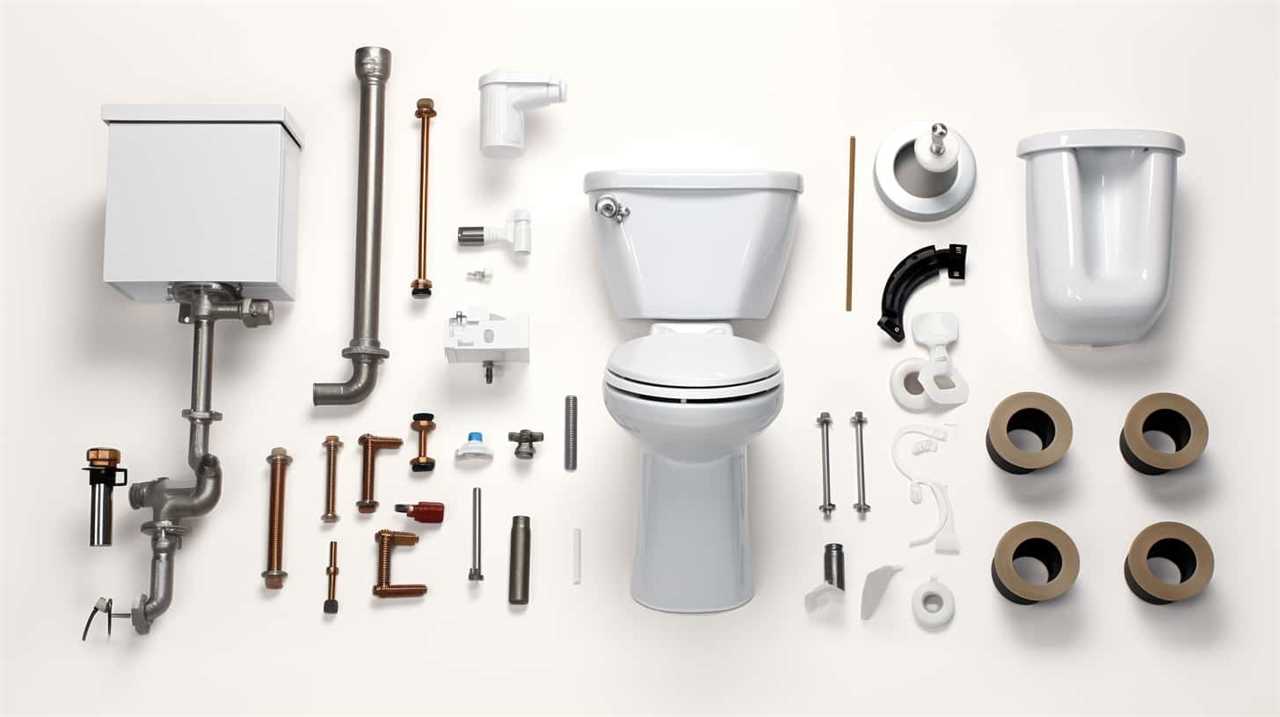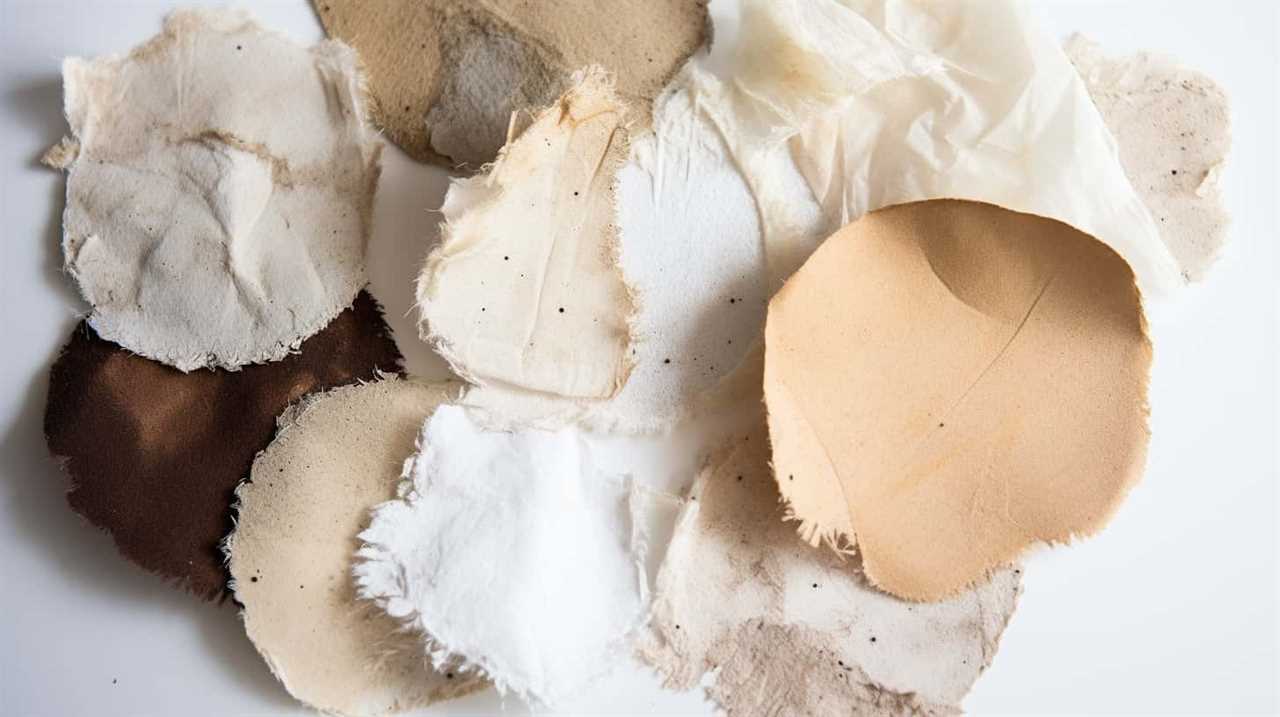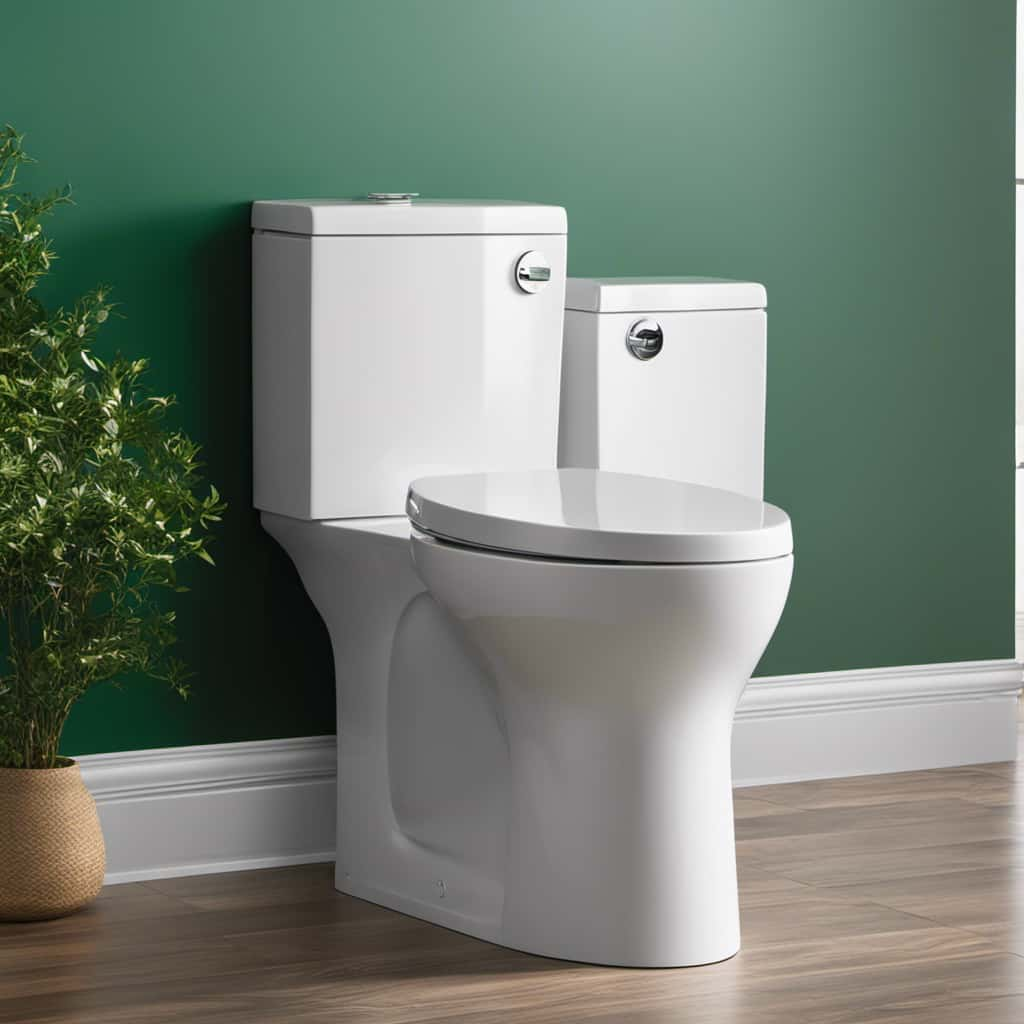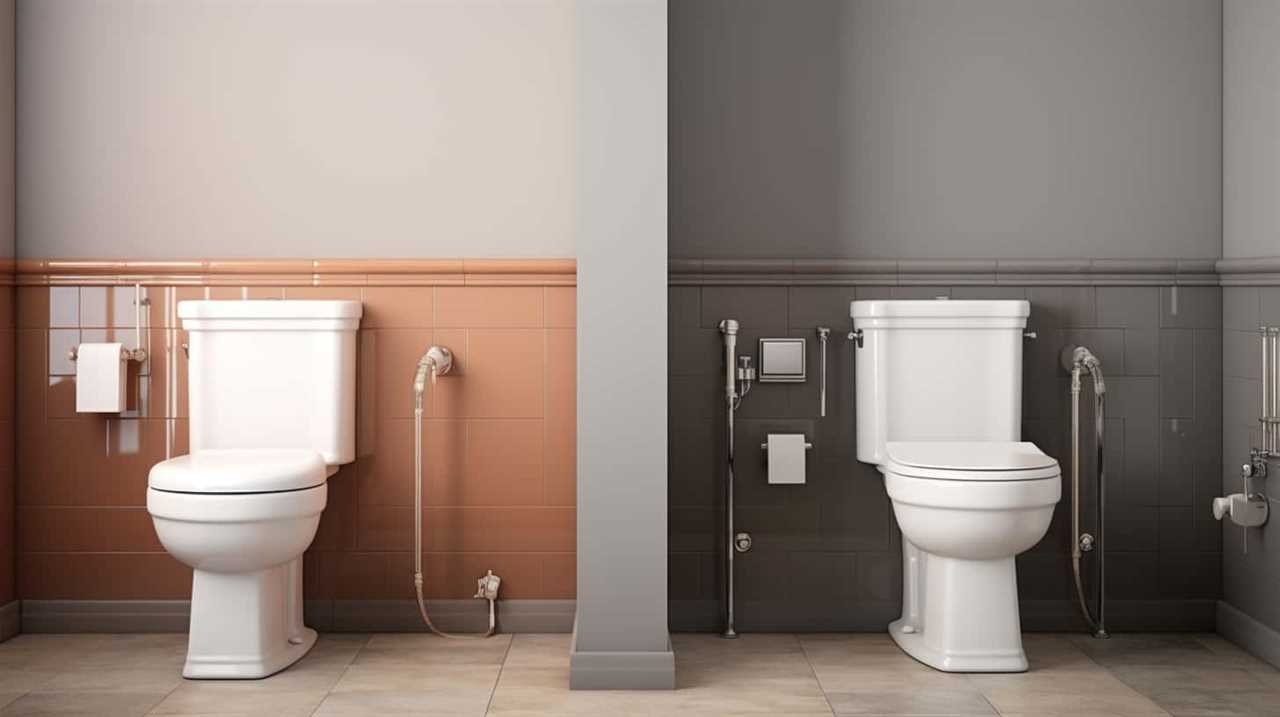Have you ever wondered what happens to toilet paper once it disappears down the drain? Well, let’s take a journey through the intricate system that handles our wastewater.
As we explore the treatment process in wastewater facilities, you’ll witness the breakdown of toilet paper in sewage systems. But it’s not just about flushing; there are environmental impacts to consider.
In this article, we’ll provide informative tips on proper toilet paper disposal, ensuring mastery over this often overlooked aspect of our daily lives.
Key Takeaways
- Flushing excessive amounts of toilet paper can lead to clogged pipes and costly repairs.
- Alternative options to traditional toilet paper include bidets, wet wipes, and reusable cloth wipes.
- Toilet paper undergoes a process of breakdown facilitated by microorganisms in sewage systems.
- Flushing toilet paper contributes to deforestation and depletion of natural resources.
The Journey From Toilet Bowl to Sewer
When we flush the toilet, toilet paper begins its journey from the toilet bowl to the sewer. This seemingly simple process can actually cause significant plumbing issues if not done correctly. Flushing excessive amounts of toilet paper can lead to clogged pipes and costly repairs. It’s important to be mindful of the amount of toilet paper being flushed, as well as to avoid flushing other non-biodegradable items.

In order to promote better waste management, there are alternative options to traditional toilet paper that can be used. These include bidets, wet wipes, and even reusable cloth wipes. By utilizing these alternatives, we can reduce the amount of toilet paper being flushed and minimize the risk of plumbing issues.
Understanding the journey of toilet paper from the toilet bowl to the sewer is crucial in comprehending the subsequent treatment process in wastewater facilities.
Treatment Process in Wastewater Facilities
After toilet paper is flushed from the toilet bowl, it enters the treatment process in wastewater facilities. Wastewater treatment methods are employed to remove contaminants and ensure the water is safe for the environment.
The primary goal of these facilities is to remove solid waste and harmful substances from the water. This is achieved through a series of processes that include physical, chemical, and biological treatments.

Physical methods such as screening and sedimentation are used to remove large debris and particles. Chemical treatments involve the use of coagulants and disinfectants to remove organic and inorganic substances. Finally, biological treatments use microorganisms to break down organic matter.
These processes work together to effectively treat wastewater and minimize its impact on the environment. As the treatment process continues, the breakdown of toilet paper in sewage systems becomes a crucial aspect to consider.
Breakdown of Toilet Paper in Sewage Systems
Once toilet paper enters the sewage systems, it undergoes a process of breakdown facilitated by the action of microorganisms. This is known as toilet paper decomposition, and it’s an essential step in the treatment of wastewater.
Microbial breakdown occurs when bacteria and other microorganisms present in the sewage system start to feed on the toilet paper, breaking it down into simpler compounds. These microorganisms secrete enzymes that break down the cellulose fibers present in toilet paper, converting them into smaller molecules that can be easily digested.

The process of toilet paper decomposition is crucial in ensuring that the wastewater is properly treated and can be safely discharged back into the environment. It’s important to note that the speed of breakdown may vary depending on factors such as the type and thickness of the toilet paper, as well as the conditions present in the sewage system.
Environmental Impact of Flushing Toilet Paper
Toilet paper, once flushed, enters the sewage system and begins its journey towards potential environmental impact. Flushing toilet paper may seem harmless, but it can have significant consequences for the environment. The production and disposal of toilet paper contribute to deforestation and the depletion of natural resources. Additionally, the use of water in the manufacturing process further strains our already limited water supply. It’s essential to consider sustainable alternatives to toilet paper, such as bidets or reusable cloth wipes, to reduce our ecological footprint.
Furthermore, practicing water conservation in bathroom practices, such as taking shorter showers and using low-flow toilets, can help mitigate the environmental impact of toilet paper usage. Transitioning to more sustainable and water-conscious practices is crucial for preserving our planet’s resources.
Now, let’s explore some tips for proper toilet paper disposal.

Tips for Proper Toilet Paper Disposal
When disposing of toilet paper, we should always remember to properly discard it to prevent any clogs or plumbing issues. One option for proper toilet paper disposal is toilet paper recycling. Many people may not be aware that toilet paper can be recycled. It’s important to check if your local recycling facility accepts toilet paper before attempting to recycle it.
Another option to consider is using alternative toilet paper options. There are environmentally friendly alternatives to traditional toilet paper, such as bamboo toilet paper or recycled toilet paper. These options are made from sustainable materials and are biodegradable, making them a more eco-friendly choice.
Frequently Asked Questions
Is It Safe to Flush Toilet Paper Down the Toilet?
It is safe to flush toilet paper down the toilet. However, it is important to consider the environmental impact and use proper disposal methods. Properly disposing of toilet paper is crucial for maintaining hygiene and preventing plumbing issues.
How Long Does It Take for Toilet Paper to Break Down in Sewage Systems?
Toilet paper decomposition rate varies based on factors like water conditions and sewage treatment. However, flushing toilet paper can have a significant impact on the environment, as it adds to the waste that needs to be processed and treated.

Can Flushing Too Much Toilet Paper Cause Clogs or Blockages in the Sewage System?
Flushing excessive amounts of toilet paper can lead to clogs and blockages in the sewage system. This poses a serious problem for effective toilet paper disposal methods. It’s crucial to avoid such practices.
What Happens to Toilet Paper if It Is Not Properly Disposed of in the Toilet?
Improper toilet paper disposal methods can have a significant environmental impact. When not properly disposed of in the toilet, toilet paper can clog pipes, lead to sewage backups, and contribute to water pollution.
Are There Any Alternatives to Flushing Toilet Paper That Are More Environmentally Friendly?
Eco-friendly alternatives to flushing toilet paper include bidets, cloth wipes, and bamboo toilet paper. By reducing our toilet paper usage, we can help minimize waste and protect the environment.
Conclusion
In conclusion, the journey of toilet paper from the toilet bowl to the sewer is an intricate process involving wastewater facilities and sewage systems.

Although the breakdown of toilet paper is efficiently managed, it’s important to consider the environmental impact of flushing. Proper disposal of toilet paper is essential to prevent any negative consequences.
Let’s remember the responsibility we hold in maintaining a sustainable and eco-friendly environment for future generations.










